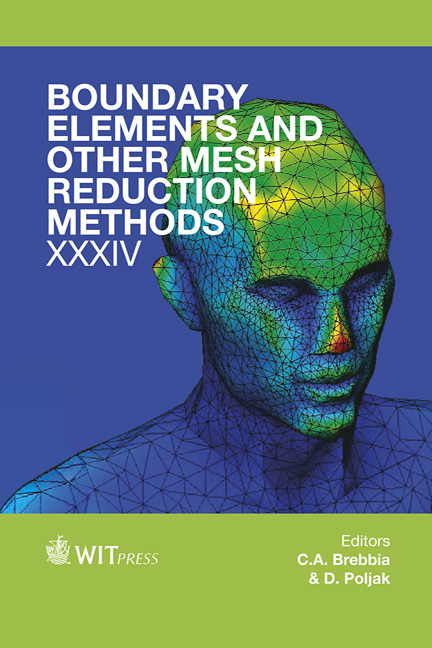Meshless Implementations Of Local Integral Equations For Bending Of Thin Plates
Price
Free (open access)
Transaction
Volume
53
Pages
12
Page Range
15 - 26
Published
2012
Size
1,088 kb
Paper DOI
10.2495/BE120021
Copyright
WIT Press
Author(s)
V. Sladek, J. Sladek & L. Sator
Abstract
In this paper, we show that the decomposition of the biharmonic equation into two Poisson equations is applicable to the general case of boundary conditions and any shape of the boundary edge of the plate, if we use the Local Integral Equation (LIE) formulation and a meshless approximation for primary field variables. Moreover, the spatial dependence of the bending stiffness does not give rise to any difficulties in this formulation. Such a formulation enables us to decrease the order of the derivatives of the field variables and so to increase the accuracy of numerical solutions. The efficiency and accuracy of several formulations is discussed in numerical tests using two alternative meshless approximations. Keywords: Kirchhoff theory, biharmonic equation, Poisson equations, mesh-free methods, field derivatives. 1 Introduction It is well known that high order derivatives of field variables in the governing equations give rise to difficulties in solution of boundary value problems because of worse accuracy of numerically evaluated high order derivatives. The order of the differential operator can be decreased mathematically by decomposing this operator into two lower order differential operators with introducing new field variables. However, the formulation of the physical boundary conditions in terms of new field variables can be problematic. Basically, it is possible to express all the original boundary densities in terms of the new fields and their derivatives as long as a domain-type approximation is employed in the numerical implementation. The question is, however, if the order of the derivatives is lower
Keywords
Kirchhoff theory, biharmonic equation, Poisson equations, mesh-free methods, field derivatives.





